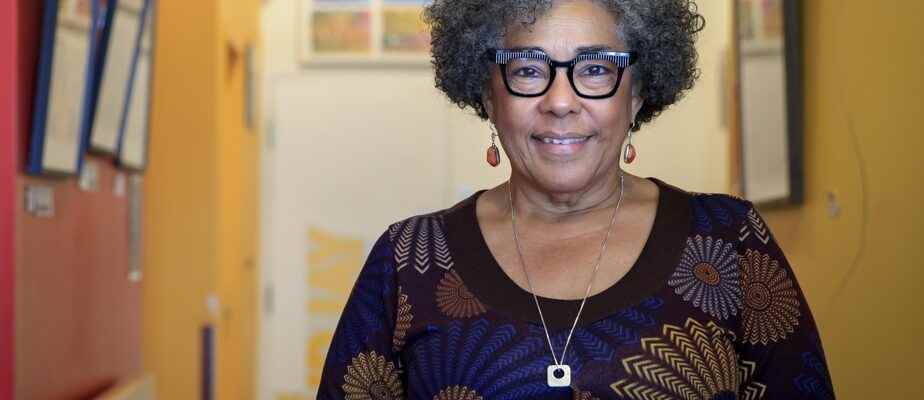The Maison d’Haïti has been welcoming and supporting members of its community (but also those of other groups) for five decades, an anniversary that will be celebrated on Saturday with a gala and an open day of activities. to all, to TOHU. Its general manager, Marjorie Villefranche, talks about the evolution and importance of this institution, passing over the years from the status of a meeting point to that of a teeming village.
Like tens of thousands of people before and after her, Mme Villefranche knocked on the doors of the Maison d’Haïti very early on. “I was a teenager, I first joined it as a young person who was looking for her identity, services. And I never left it, ”recalls the one who was in turn volunteer, activist, then director of programs in 1983, and finally general manager from 2010.
She was thus in the front row to observe the development of the community organization established in the Saint-Michel district, including several moves as the walls proved to be too small in relation to ever-growing needs; the latest dates back to 2016.

PHOTO PHILIPPE BOIVIN, LA PRESSE ARCHIVES
Every year, thousands of people seek training, support, recreation, or just a chance to socialize in the palm-adorned building.
“We really built something that looks like us, very colorful, very modern,” says Marjorie Villefranche, stressing that this change has been accompanied by a development of its offer. “We have matured a lot and are working around six coordinations, namely the integration of newcomers, the family, education for adults and children, youth, women and the arts center”, she lists. From help with homework to job search, from francization courses to musical festivals, the concrete range of activities is vast and targets all generations.
Awareness
In addition to this diversification, what changes has the director been able to observe over the years? It highlights the unique character of Haitian immigration to Quebec, which occurs continuously, unlike the occasional and ephemeral waves fed by other communities.
“Today’s new arrival has the same needs as that of the 1970s. He tries to adapt, to integrate, fleeing an untenable situation in his country. The difference now is that he will find a much stronger community to welcome him. Also, Quebecers know the Haitian community much better,” explains Ms.me Villefranche.
The latter insists on the fact that the role of the Maison d’Haïti is not limited to providing services and solving problems; it aims to raise awareness of the situation of those who frequent the institution, as well as training in the civic responsibility played by the organization. Dialogues are thus oriented towards a better understanding of the integration of new arrivals and their identity, by leading them to question the process in which they themselves or their ascendants have engaged.
We’re not just providing services, we’re going to provide something more, a kind of civic education. You will get out of there feeling responsible for your street, your neighborhood, your city.
Marjorie Villefranche, general manager of the Maison d’Haïti
Its next battle horse will be to encourage populations and governments to feed a more global reflection on population movements, taking into account their global character, because “it is a concern that goes beyond the Roxham Road “.
The pearl of Saint-Michel
It is difficult to quantify exactly how many souls have crossed the threshold of the Maison d’Haïti since its foundation in 1972, but their number is estimated at several thousand per year, and it continues to grow year after year. In 2022, nearly 12,000 people contacted her. Anonymous, but also well-known names have gravitated around these walls, such as Michaëlle Jean, Rodney Saint-Éloi or even Dany Laferrière. About the latter, Marjorie Villefranche recalls: “He came at the time not to find services, but, I think, an atmosphere that brought him back a little to his village. »

PHOTO FROM THE MAISON D’HAITI WEBSITE
Holiday celebrations in the early 1970s, during the institution’s early years
However, do not believe that Haitians and Quebecers are the only ones to frequent the place, since people from Latin America, the Maghreb, Asia or Africa also find an outstretched hand. A fair return, the Haitian community having itself received the support of the Italians, already established in the district when it dropped anchor there.
Alongside these doors that opened, there were also walls that shook. As everyone knows, the year 2010 was particularly trying for the Haitian community, while the pearl of the Antilles was cracking under the onslaught of a devastating earthquake. For the Maison d’Haïti, it was a test of solidarity and resilience in the face of the needs arising from the disaster – a test passed with flying colors. “It was difficult, but revealing about our ability to cope,” says Mme Villefranche.
Saturday, at TOHU, starting at 10:30 a.m. with entertainment for children, the heart will be rather festive, to celebrate this solidarity and these colors that have not tarnished for half a century, the Haitian community knowing a thousand ways to maintain the luster of its pearl.
